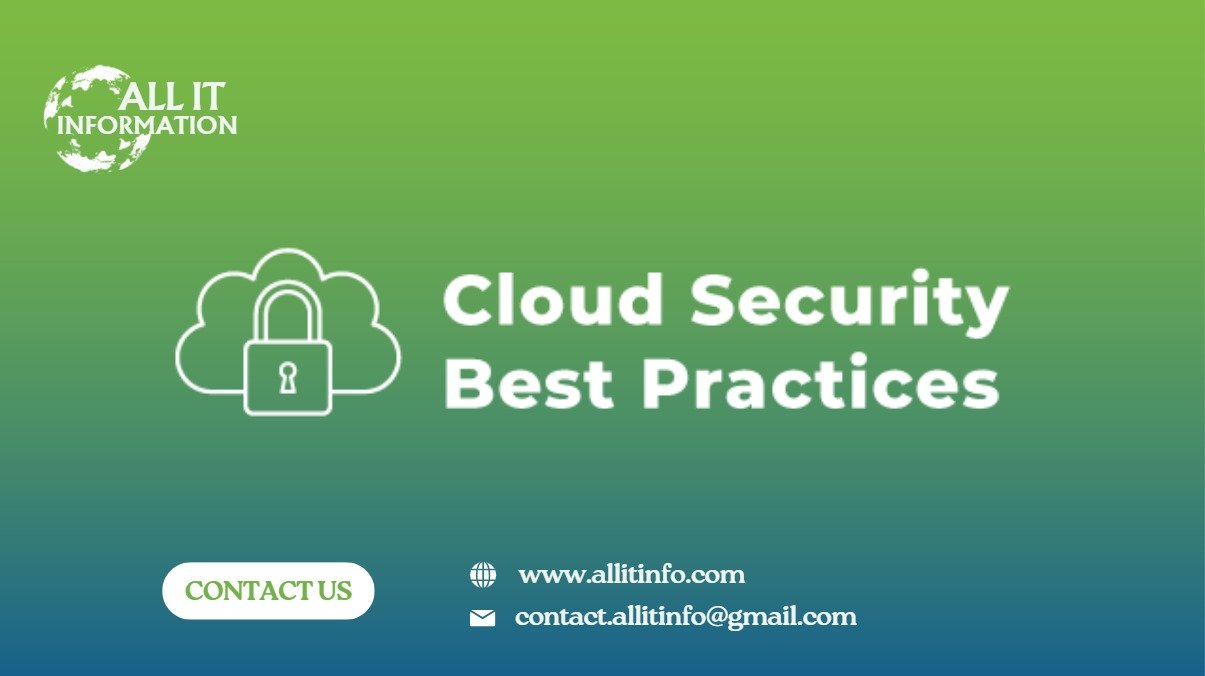
In the fast-paced world of technology, organizations are increasingly leveraging cloud services to enhance agility, scalability, and efficiency. However, the widespread adoption of cloud computing has brought forth new challenges in terms of security. As businesses entrust sensitive data to the cloud, it becomes imperative to establish and adhere to robust security practices. This article delves into “Best Practices for Cloud Security”. The key strategies for ensuring cloud security and dispels common misconceptions surrounding it.
Encryption serves as the bedrock of cloud security. Implementing end-to-end encryption ensures that data is protected both in transit and at rest. This means that even if unauthorized access occurs, the intercepted data remains indecipherable. Organizations must prioritize strong encryption algorithms and regularly update encryption keys to stay ahead of potential threats.
The management of user identities and access rights is pivotal in securing cloud environments. Adopting a robust IAM strategy ensures that only authorized personnel have access to specific resources. The principle of least privilege should be applied, granting users the minimum level of access required for their tasks. Regularly review and update access controls to adapt to changes in organizational structure or personnel.
Augmenting traditional password-based authentication with MFA adds an extra layer of security. MFA requires users to verify their identity through multiple authentication methods, such as a password and a one-time code sent to their mobile device. This greatly diminishes the likelihood of unauthorized access, even in the event of login credentials being compromised.
Implementing continuous monitoring and auditing tools is essential for real-time visibility into cloud activities. These tools can detect anomalies, generate alerts, and provide insights into potential security incidents. Regularly reviewing audit logs allows organizations to identify and respond promptly to any suspicious activity, minimizing the impact of security breaches.
Educating employees on security best practices is crucial for a strong defense against cyber threats. Regular training sessions and awareness programs can help employees recognize potential risks and adhere to security protocols. Human error is a significant factor in security incidents, and a well-informed workforce is a vital component of a robust security strategy.
Keeping cloud-based systems, applications, and virtual machines up to date with the latest security patches is paramount. Regularly scheduling vulnerability assessments helps identify and remediate potential weaknesses in the infrastructure. Timely updates are critical in closing security gaps and protecting against known vulnerabilities.
Establishing a robust data backup and recovery strategy is essential for business continuity. Regularly backing up critical data to a secure, isolated environment ensures that, in the event of a security incident or data loss, the organization can swiftly recover and resume normal operations.
Developing a comprehensive incident response plan tailored to cloud environments is essential. This plan should define roles and responsibilities, establish communication protocols, and include regular drills to ensure a swift and effective response in the event of a security incident. Learning from simulated scenarios enhances the organization’s overall security posture.
One prevalent misconception is that the cloud is inherently insecure. In reality, major cloud service providers invest significantly in security measures, often surpassing what individual organizations can achieve on their own. To address this, organizations must understand the shared responsibility model, acknowledging their role in securing their specific cloud deployments.
Assuming that cloud service providers automatically handle all security aspects is a dangerous assumption. While providers secure the underlying infrastructure, organizations are responsible for securing their data and applications. A thorough understanding of the shared responsibility model is crucial for implementing effective security measures.
Another misconception is that cloud security is a one-time setup. In reality, it is an ongoing process that demands continuous attention and adaptation. Regularly reassessing and updating security measures is necessary to address evolving threats and vulnerabilities. Implementing a continuous monitoring and improvement cycle ensures that security remains robust over time.
Not all cloud services are equal in terms of security features. Organizations should carefully evaluate and choose cloud service providers based on their security capabilities, compliance certifications, and reputation. Conducting due diligence in the selection process is essential for a secure cloud environment.
Believing that security is solely the responsibility of the IT department is a common misconception. Security is a collective responsibility that extends beyond IT. Involving employees from all levels of the organization in security practices and fostering a culture of awareness significantly enhances overall security. Regular training and communication about security policies empower individuals to contribute to the organization’s security posture.
In the era of digital transformation, the cloud offers unparalleled opportunities for innovation and efficiency. However, these benefits come with the responsibility of safeguarding valuable data and operations. By implementing the aforementioned strategies and dispelling common misconceptions, organizations can fortify their cloud environments against evolving cyber threats. The key lies in a proactive, collaborative, and continuous approach to security, ensuring that the advantages of the cloud are harnessed without compromising on the integrity and confidentiality of critical assets.